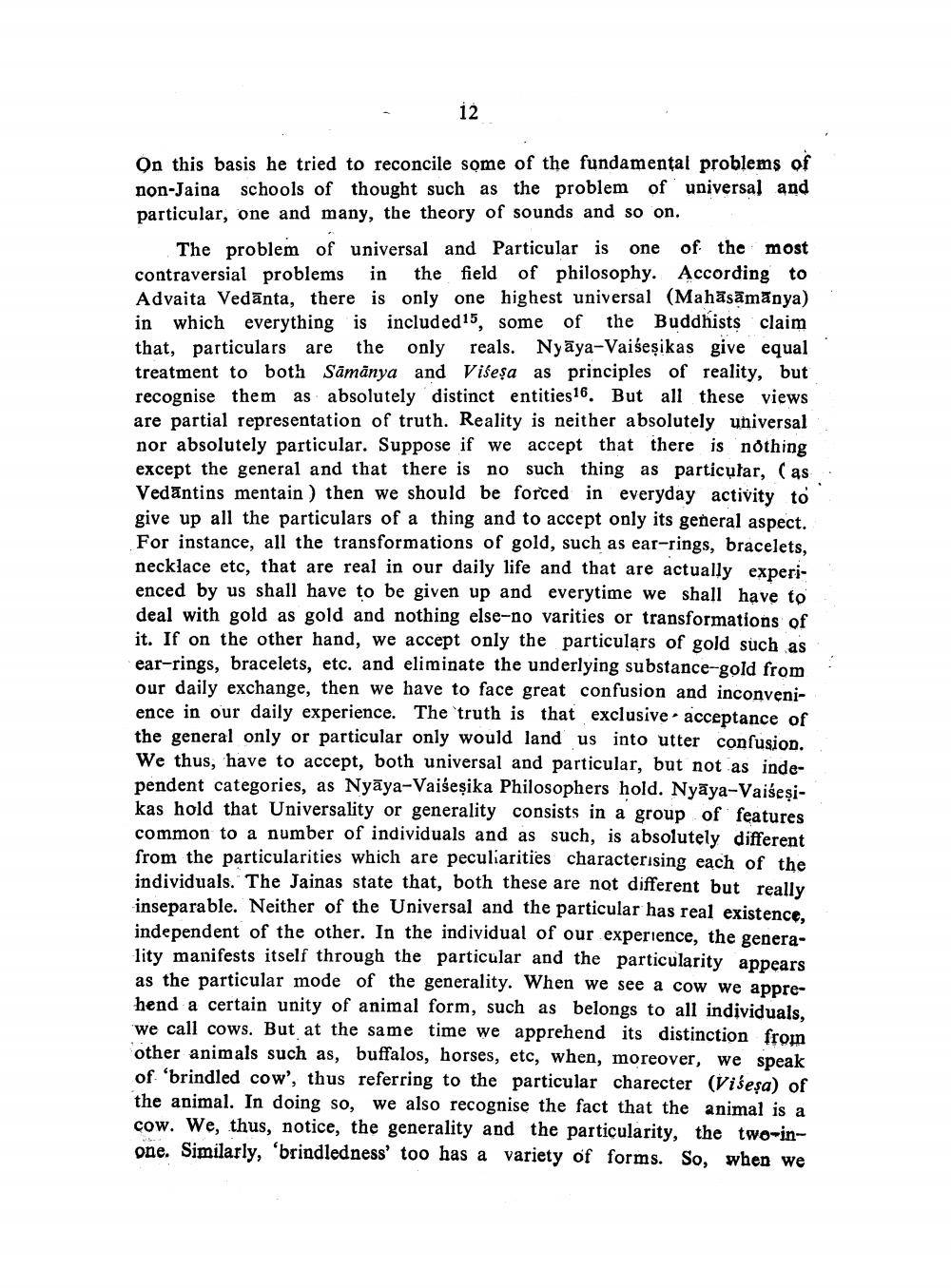________________
12
On this basis he tried to reconcile some of the fundamental problems of non-Jaina schools of thought such as the problem of universal and particular, one and many, the theory of sounds and so on.
The problem of universal and Particular is one of the most contraversial problems in the field of philosophy. According to Advaita Vedānta, there is only one highest universal (Mahāsāmānya) in which everything is included 15, some of the Buddhists claim that, particulars are the only reals. Nyāya-Vaišeşikas give equal treatment to both Sāmānya and Viseșa as principles of reality, but recognise them as absolutely distinct entities 16. But all these views are partial representation of truth. Reality is neither absolutely universal nor absolutely particular. Suppose if we accept that there is nothing except the general and that there is no such thing as particular, (as. Vedāntins mentain ) then we should be forced in everyday activity to give up all the particulars of a thing and to accept only its general aspect. For instance, all the transformations of gold, such as ear-rings, bracelets, necklace etc, that are real in our daily life and that are actually experienced by us shall have to be given up and everytime we shall have to deal with gold as gold and nothing else-no varities or transformations of it. If on the other hand, we accept only the particulars of gold such as ear-rings, bracelets, etc. and eliminate the underlying substance-gold from : our daily exchange, then we have to face great confusion and inconvenience in our daily experience. The truth is that exclusive acceptance of the general only or particular only would land us into utter confusion. We thus, have to accept, both universal and particular, but not as independent categories, as Nyāya-Vaišeșika Philosophers hold. Nyāya-Vaišeşikas hold that Universality or generality consists in a group of features common to a number of individuals and as such, is absolutely different from the particularities which are peculiarities characterising each of the individuals. The Jainas state that, both these are not different but really inseparable. Neither of the Universal and the particular has real existence, independent of the other. In the individual of our experience, the generality manifests itself through the particular and the particularity appears as the particular mode of the generality. When we see a cow we apprehend a certain unity of animal form, such as belongs to all individuals, we call cows. But at the same time we apprehend its distinction from other animals such as, buffalos, horses, etc, when, moreover, we speak of 'brindled cow', thus referring to the particular charecter (Višeşa) of the animal. In doing so, we also recognise the fact that the animal is a cow. We, thus, notice, the generality and the particularity, the two-inone. Similarly, 'brindledness' too has a variety of forms. So, when we




